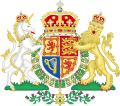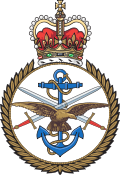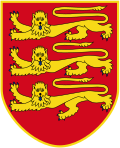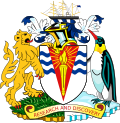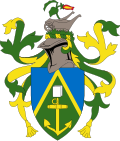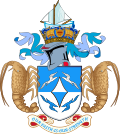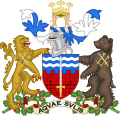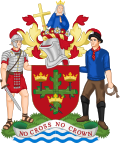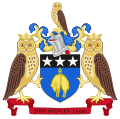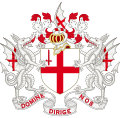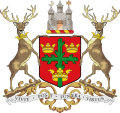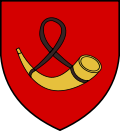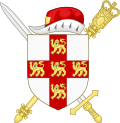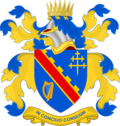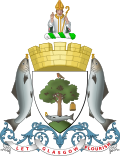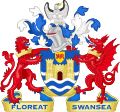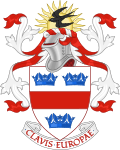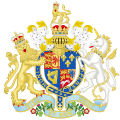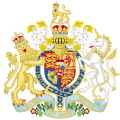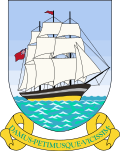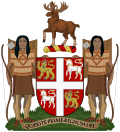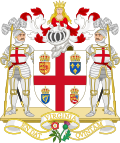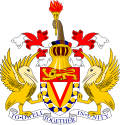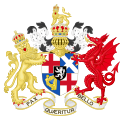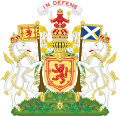| Armorial achievement | Shield | Bearer | Difference(s) |
|---|
|  | William, Prince of Wales | The coat of arms of the Prince of Wales is the royal arms with a plain three-point label, augmented by an inescutcheon of the traditional arms of the Principality of Wales. [1] |
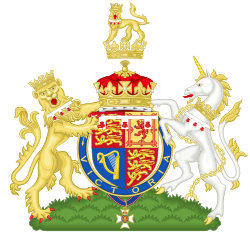 |  | Prince Harry, Duke of Sussex | Three-point label with three red escallops in each point, alluding to the patrilineal arms of his mother, Diana, Princess of Wales. The label changed from five to three points, with each point bearing an escallop, upon his father's accession to the throne in 2022, as previously stated by the College of Arms. [2] [3] [4] |
 | 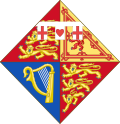 | Anne, Princess Royal | Three-point label, the points bearing a red cross, a red heart and a red cross. [5] |
 | 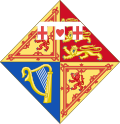 | Scottish version of the Princess Royal's arms with a three-point label, the points bearing a red cross, a red heart and a red cross. [5] |
 |  | Andrew Mountbatten-Windsor | Three-point label, the centre point bearing a blue anchor. [5] |
 |  | Princess Beatrice, Mrs Edoardo Mapelli Mozzi | Five-point label with three bees in alternate points, alluding to the patrilineal arms of her mother, Sarah, Duchess of York. |
 | 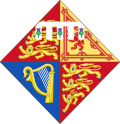 | Princess Eugenie, Mrs Jack Brooksbank | Five-point label with three thistles in alternate points, alluding to the patrilineal arms of her mother, Sarah, Duchess of York. |
 |  | Prince Edward, Duke of Edinburgh | Three-point label, the centre point bearing a Tudor rose. |
 |  | Scottish version of the Duke of Edinburgh's arms with a three-point label, the centre point bearing a Tudor rose |
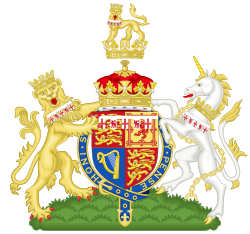 |  | Prince Richard, Duke of Gloucester | Five-point label, the first, third and fifth points bearing a red cross, the second and fourth points bearing a red lion. |
 |  | Prince Edward, Duke of Kent | Five-point label, the first, third and fifth points bearing a blue anchor, the second and fourth points bearing a red cross. [5] |
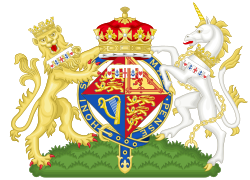 |  | Princess Alexandra, The Hon. Lady Ogilvy | Five-point label, the first and fifth points bearing a red heart, the second and fourth points bearing a blue anchor, and the third bearing a red cross. [5] |
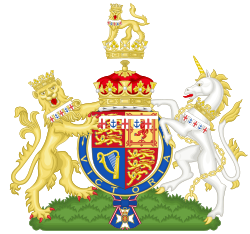 |  | Prince Michael of Kent | Five-point label, the first, third and fifth points bearing a red cross, the second and fourth points bearing a blue anchor. [5] |
| Consorts |
 |  | Queen Camilla | The arms of the King impaled with those of Camilla's father, Major Bruce Shand, crowned with the royal crown. [7] |
|
 |  | Scottish version of the Queen's coat of arms with the royal crown. |
 |  | Catherine, Princess of Wales | The arms of the Prince of Wales impaled with those of Catherine's father, Michael Middleton. [8] |
 |  | Meghan, Duchess of Sussex | The arms of the Duke of Sussex impaled with those of her own design, crowned with the coronet of a child of the sovereign. [9] |
 |  | Sophie, Duchess of Edinburgh | The arms of the Duke of Edinburgh impaled with those granted in 1999 to Sophie's father, Christopher Rhys-Jones, with remainder to his elder brother Theo. The new grant was based on an unregistered 200-year-old design. The lion alludes to one of the Duchess's ancestors, the Welsh knight Elystan Glodrydd, Prince of Ferrig. [10] |
 |  | Birgitte, Duchess of Gloucester | The arms of the Duke of Gloucester with an escutcheon of pretence granted to her by royal warrant on 18 July 1973. |
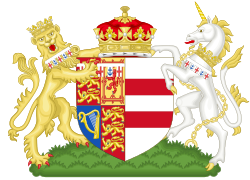 |  | Princess Michael of Kent | The arms of Prince Michael of Kent impaled with those of Marie Christine's father, Baron Günther Hubertus von Reibnitz. |







